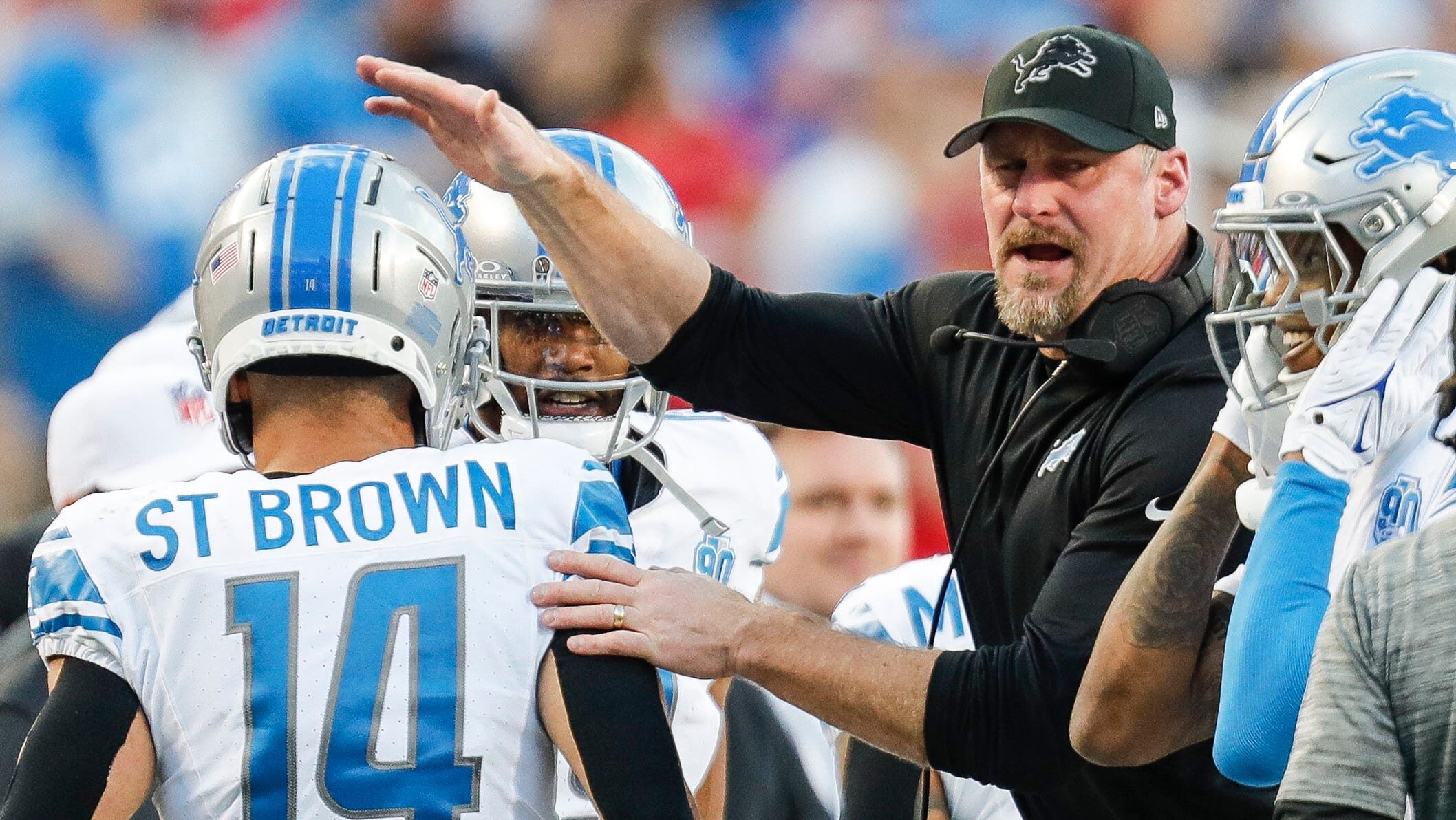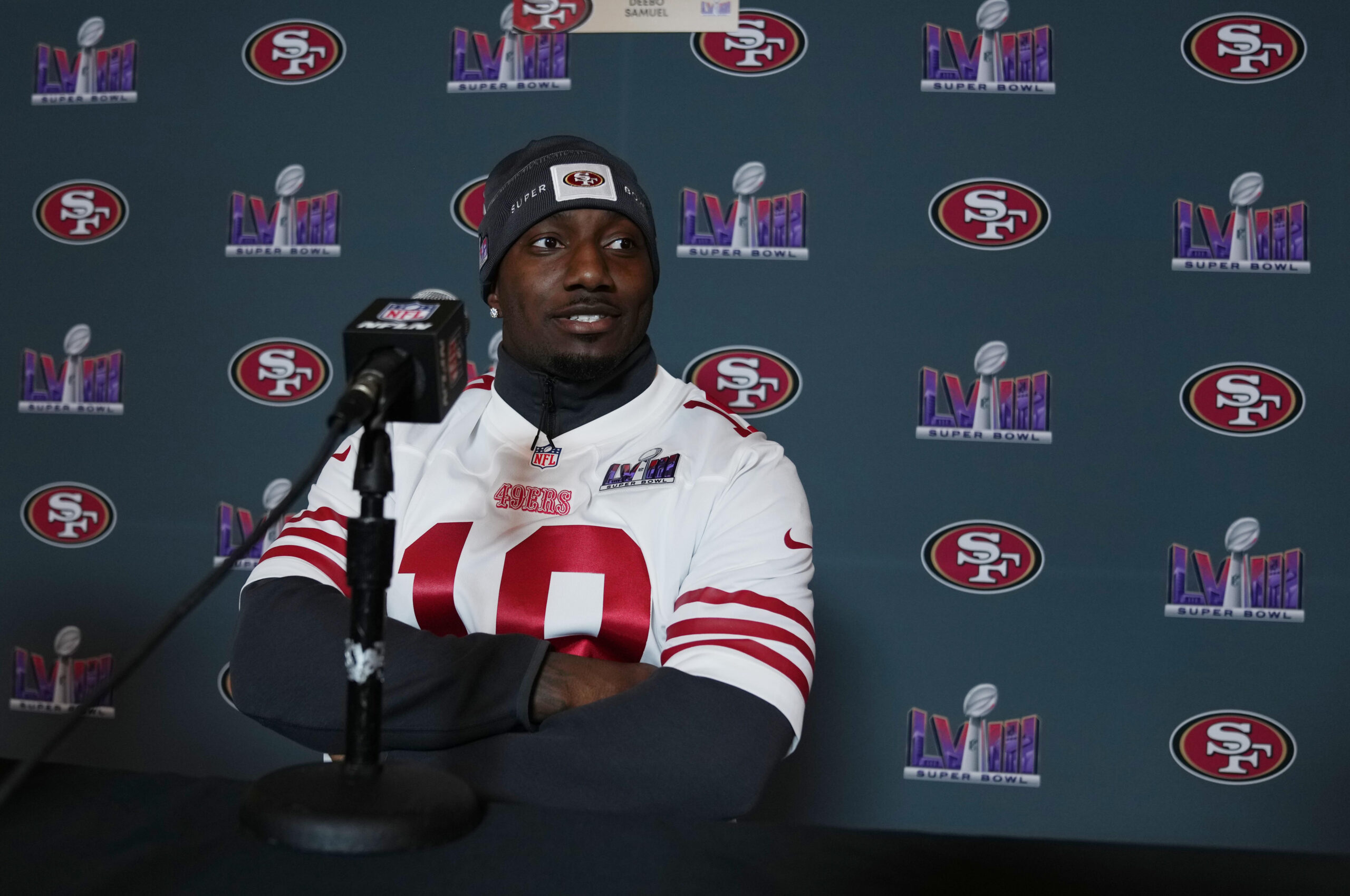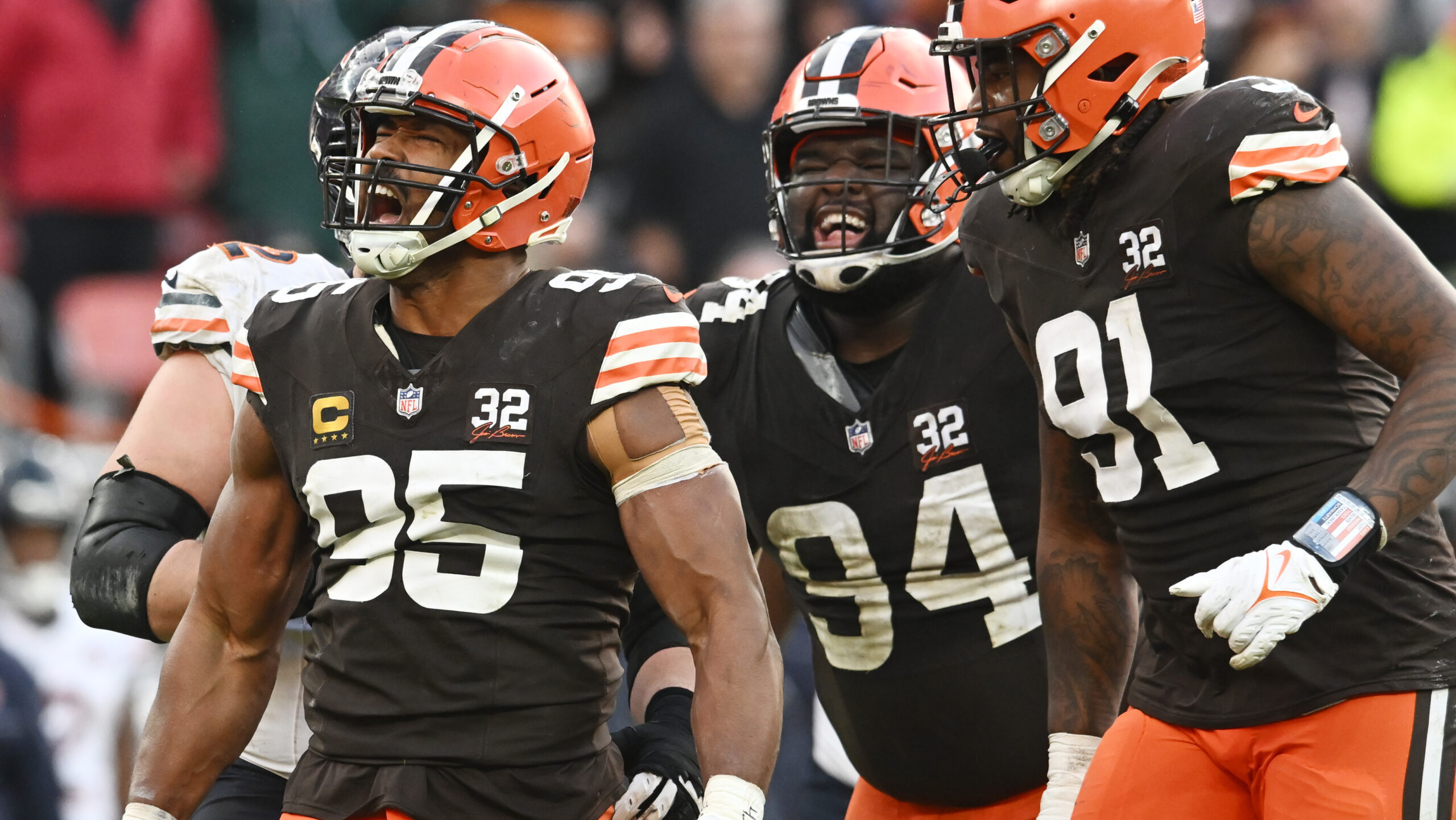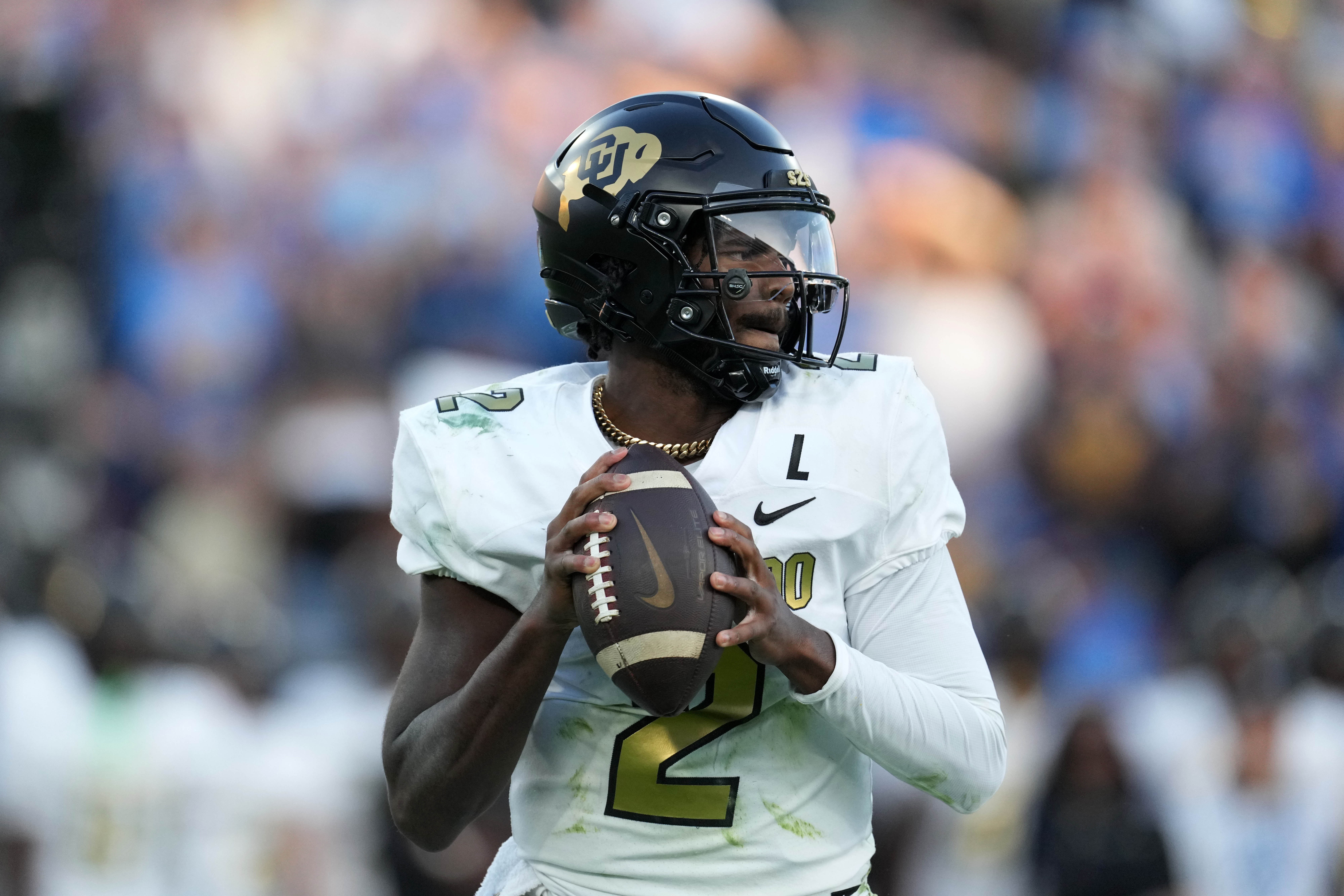NFL Analysis
12/19/23
7 min read
How Joe Brady Has Unlocked Bills Offense, Set Buffalo Up for Playoff Run
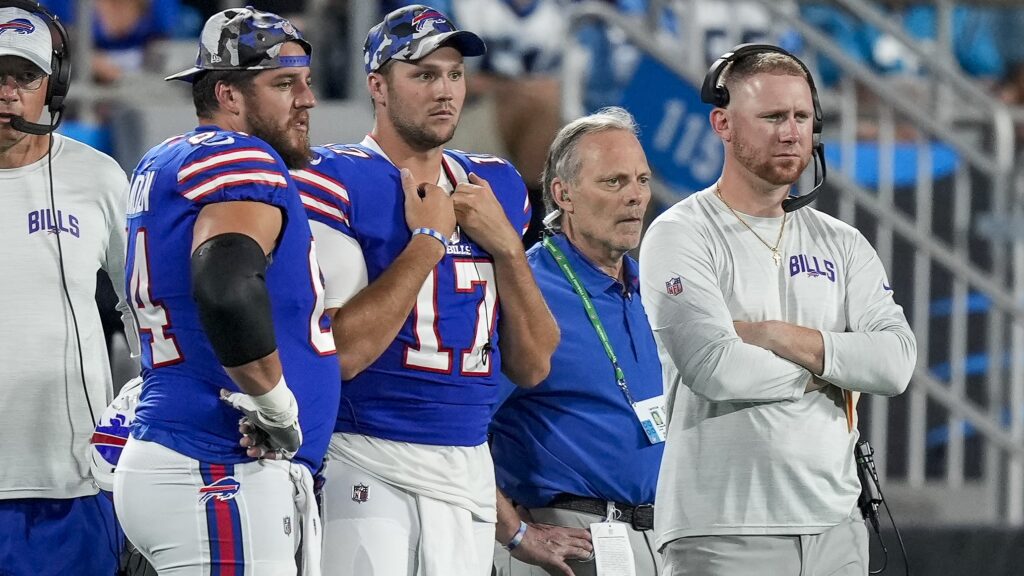
When the Buffalo Bills moved on from offensive coordinator Ken Dorsey, Buffalo still had one of the better offenses in the league statistically. Through Week 10, the Bills ranked third in EPA per play, second in success rate, fourth in EPA per drive and fourth in points per drive, according to TruMedia.
Yet, the Bills were 5-5, and something seemed off about the offense, even with the statistical success. Dorsey was let go, and quarterbacks coach Joe Brady was promoted to offensive coordinator. Since Brady took over, the Bills are 3-1, with their only loss being a thrilling overtime game against the Philadelphia Eagles.
Statistically, the offense looks… mostly the same. Brady's offense is slightly worse by EPA per play and success rate. But the offense is better in EPA per drive and points per drive.

The biggest issue for the Bills in the season’s first 10 weeks was the high rate of turnovers. 17.3 percent of Buffalo’s drives ended in a turnover, the second-highest rate in the league.
Since Brady took over, that rate is just 6.5 percent, the sixth-lowest. There was always going to be turnover regression somewhere for the Bills. Buffalo had lost seven of 10 fumbles on offense in the first 10 weeks of the season. Since Week 11, the Bills have fumbled four times and recovered all four.
There were also the interceptions. Josh Allen’s 3.1 percent interception rate was 27th among quarterbacks through Week 10. Since Week 11, that has dropped to a 2.1 percent rate, which is still 20th but a meaningful enough improvement.
Of course, the secret isn’t just “stop turning the ball over.” That would be a fairly lame conclusion and a very short article. But subtle changes in the offense have allowed for more sustained drives and success.
Small Changes, Big Results
Under Brady, the Bills have more fluid movement before and after the snap. This is an area where it’s not necessarily a fix of something broken but a shift to lessen the responsibility for the quarterback and pass catchers.
In the first 10 weeks of the season, 20 percent of Allen’s throws went to hitch routes, the sixth-highest rate in the league. Allen was great there, averaging 0.57 EPA per play on those throws.
Only three quarterbacks were better, but they had significantly fewer attempts on those routes.
In a vacuum, those routes aren’t an issue. But even with the high success, there’s a lack of true upside in those routes. The receiver is coming back to the ball, so unless there is a broken tackle, there typically aren’t more yards to be gained after the catch.
Only 28 percent of Allen’s yards on hitches came after the catch. Allen has thrown hitches on just 12.1 percent of his attempts under Brady, which is 20th among quarterbacks in that time.
Those types of throws were also outside the numbers. In the past four games, there has been an increased emphasis on using the middle of the field. Below is a heatmap of where the ball has been thrown this season under each offensive coordinator.
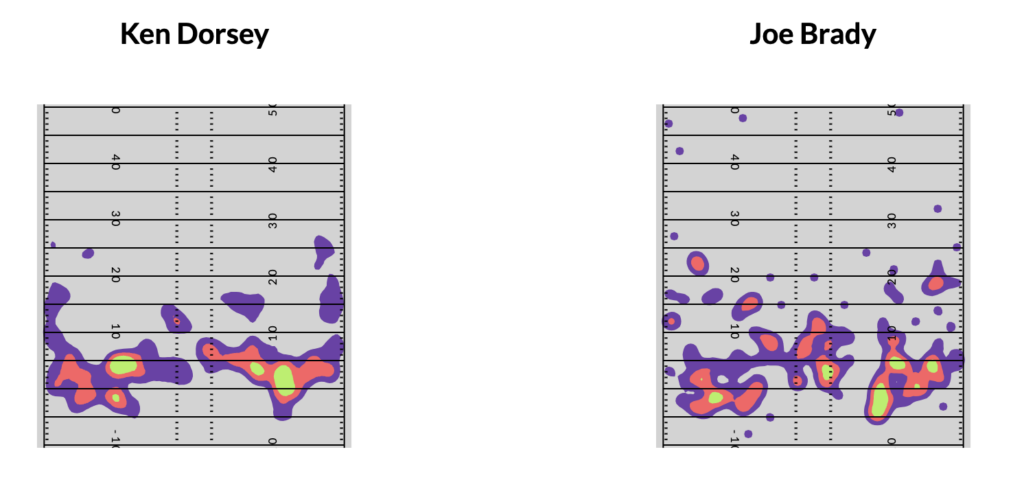
When Allen has thrown to the middle of the field since Week 11, he has averaged 0.41 EPA per play. That was just 0.15 EPA per play through the first 10 weeks.
This was a problem area for interceptions, but there has been a shift in the value of completions where Allen’s yards per completion has increased from 10.7 to 13.1 while his average depth of target has dropped from 6.7 to 4.6.
Getting the ball out quicker into space has created more room for yards after the catch, where 63.5 percent of his yards now come after the catch, compared to 37.4 percent.
Running Back Prowess
The most significant difference in the passing game is who is getting used and how. The most significant “who” is James Cook. Running backs have gone from being targeted 13.1 percent of Allen’s passes under Dorsey to 22.2 percent with Brady.
Relying too heavily on running back targets can be rough because they are often inefficient. Usually, that’s because they are late in the play and as a last resort or behind the line of scrimmage — sometimes both.
That’s not how the Bills have used Cook in the passing game in the past few weeks. He’s been a top option for downfield plays. Against the Chiefs, Cook had a long touchdown up the seam on a concept that was en vogue during Sean McVay’s early seasons with the Rams.
The jet motion pulls the safety and opens the middle of the field for the running back going vertical.
Then, against Dallas, Cook ran a corner route from the backfield and beat LB Damone Clark in coverage.
In the past four games, Cook has averaged 3.46 yards per route run, and he’s been targeted on 31 percent of his routes. Those are top receiver type of numbers.
That yards per route run figure is fourth among players with at least 50 routes since Week 11.
Those are all just small but meaningful changes to the passing game. What became clear against the Cowboys is there can be a fully functional running game should the Bills need to rely on it.
Making Most of OL Improvement
Against Dallas, Buffalo ran for more than 250 yards for just the second time since 2016. The Bills dropped back on just 29 percent of offensive plays, easily the lowest for an Allen-quarterbacked game. In doing so, the Bills averaged 0.25 EPA per rush with a 62.8 percent success rate.
The Bills bullied the Cowboys up front and kept the dangerous Dallas pass rush from making an impact. This is behind one of the Bills' best run-blocking offensive lines have had in the Allen era.
Per ESPN’s run block win rate, the Bills are 10th, pending the Dallas game, which should make those numbers look even better. Buffalo was 22nd in 2022, 23rd in 2021 and 29th in 2020.
For all the resources put into the offensive line in the past few seasons, there was always something to be desired in the run blocking. The Bills remained one of the league’s pass-heaviest teams but would fall short when the run game was needed.
There is also a more coherent run game to open up space. The Bills have gotten their offensive linemen on the move. Cook’s 24-yard touchdown against the Cowboys featured a puling Dion Dawkins and eight yards gained before contact.
Allen Is Playing His Part
Allen has played his part here, too. In the past few years, the Bills have wanted to keep Allen from running and saved it for “break glass in case of emergency” situations.
Either Brady has encouraged more running, or the Bills believed a .500 record while pushing for the playoffs is an emergency because Allen has been running more in the past four games.
He took over the game against the Eagles on the ground with nine carries for 81 yards and four runs of 10 or more yards, his most in a game since Week 10 of last season. Even though Allen only went for 24 yards on eight carries against the Cowboys, 75 percent of those runs were successful, including a one-yard touchdown run in the second quarter.
Allen has four rushing scores in the past three games.
At any point, Allen could go into hero mode and carry the team with his legs or arm. It’s another element added to the simpler and more effective game plan the Bills have worked with since the coordinator change.
There haven’t been massive changes to the offense, and it’s not as if there was a total schematic overhaul. The Bills were always good on offense, but the minor tweaks have helped make that play more meaningful.
With three weeks remaining in the regular season, the Bills have a 53.7 percent chance to make the playoffs per FTN’s DVOA odds. It’s 71 percent, according to The Upshot.
Buffalo has played itself back into the playoff race, and the offense could make it one of the more dangerous threats should it get in.


